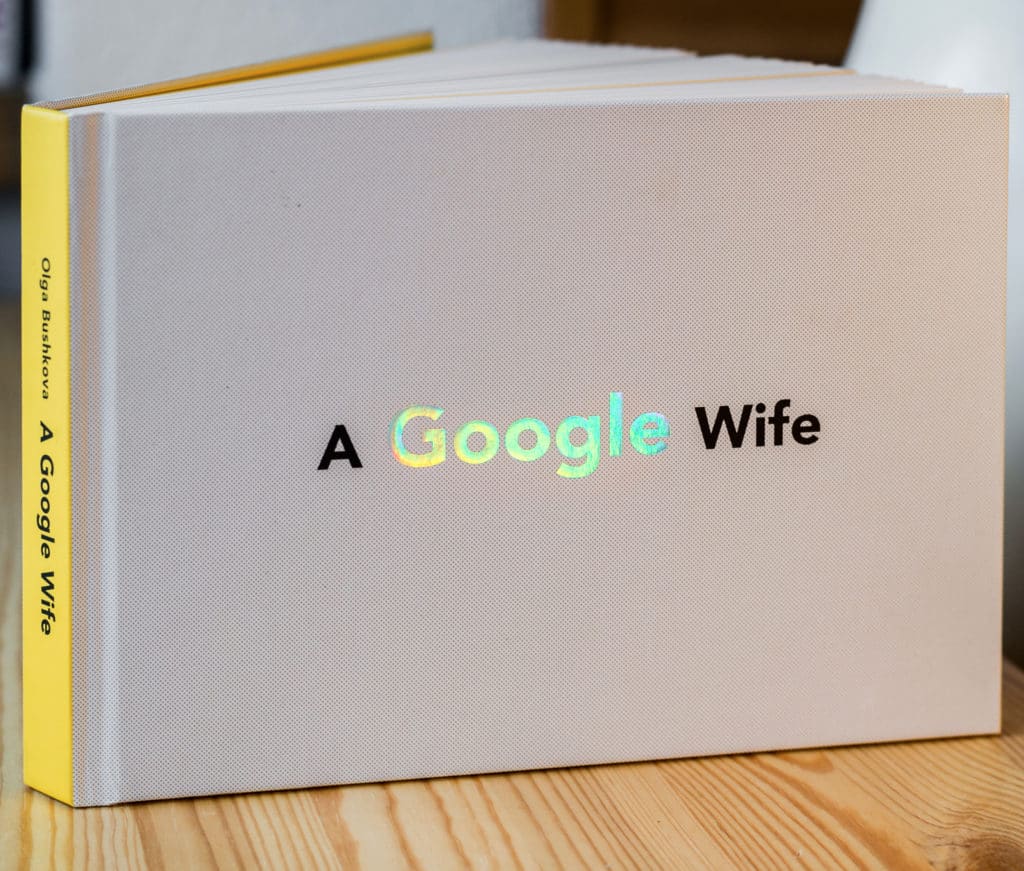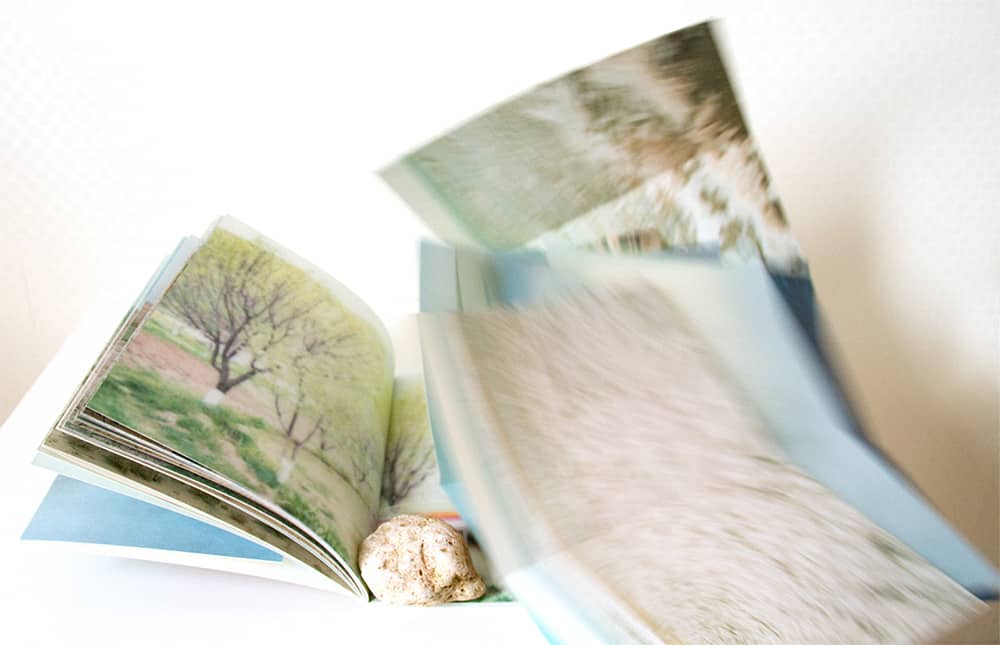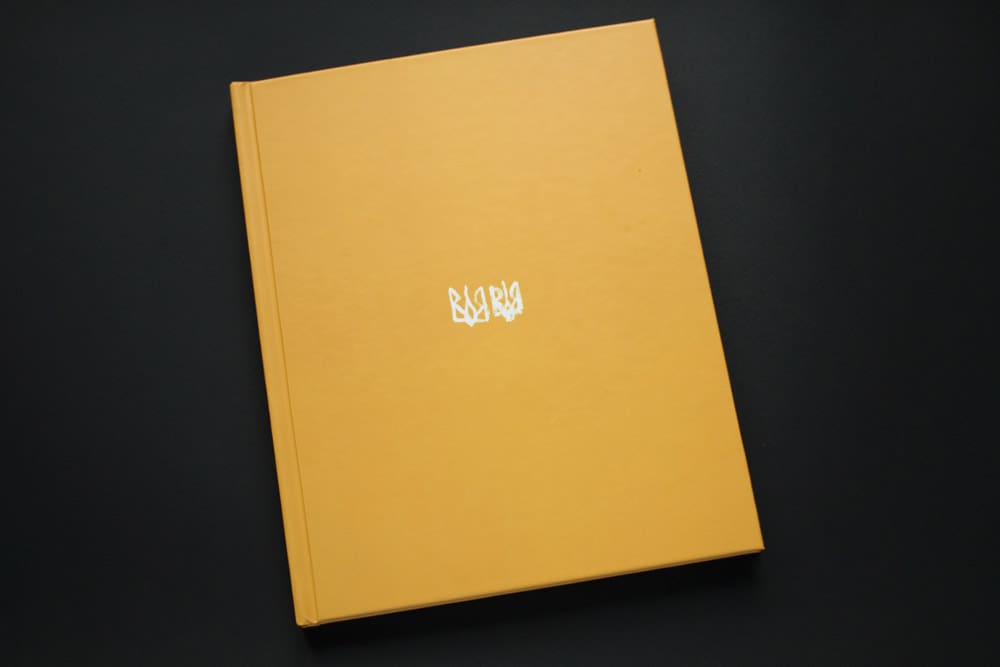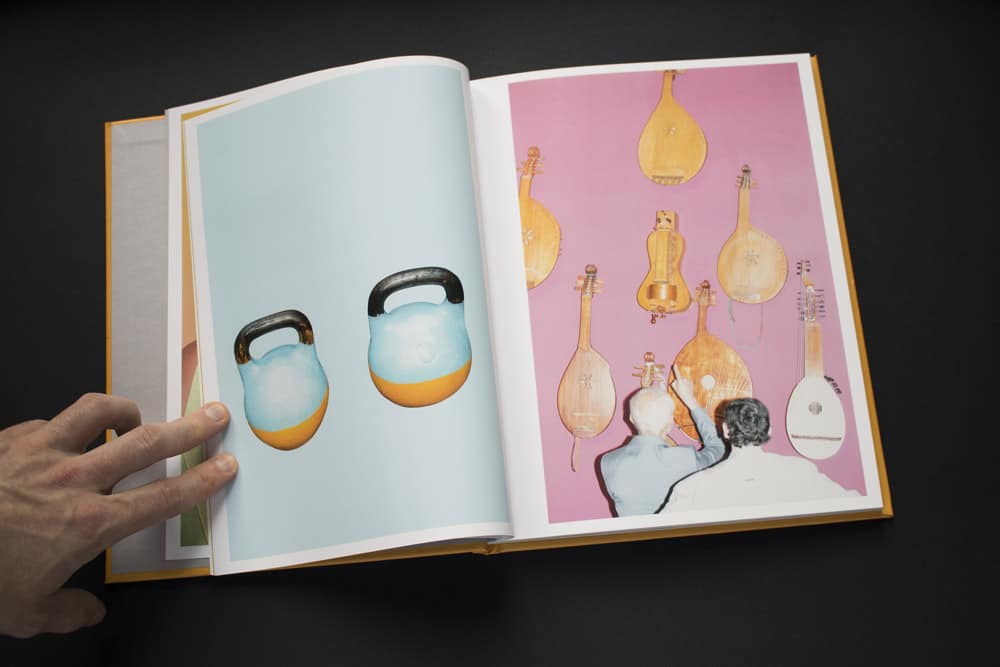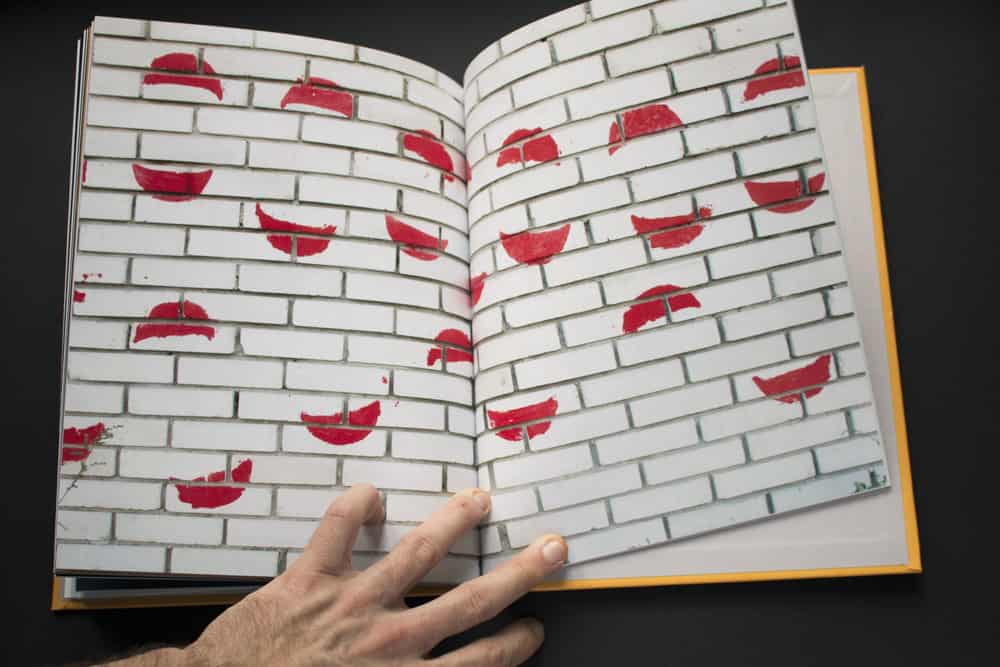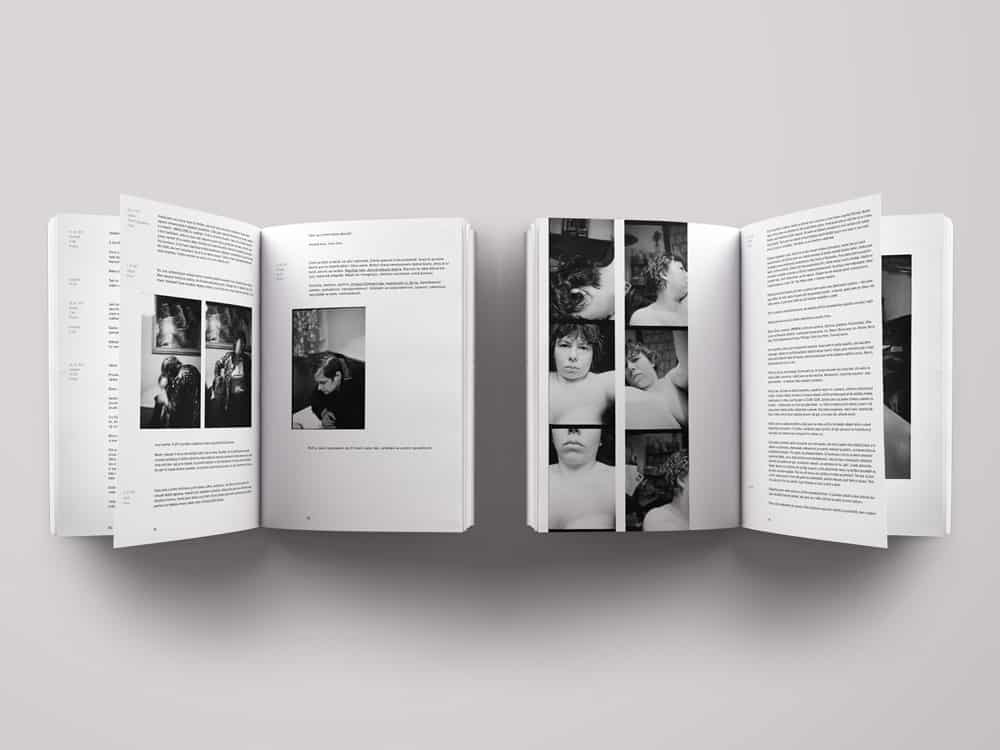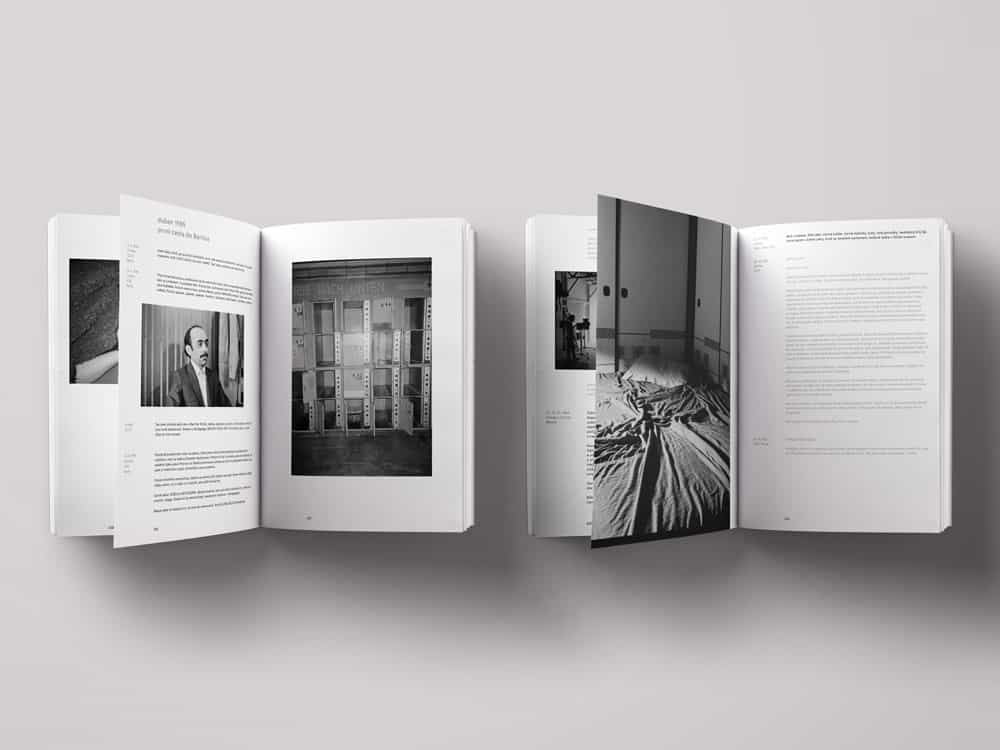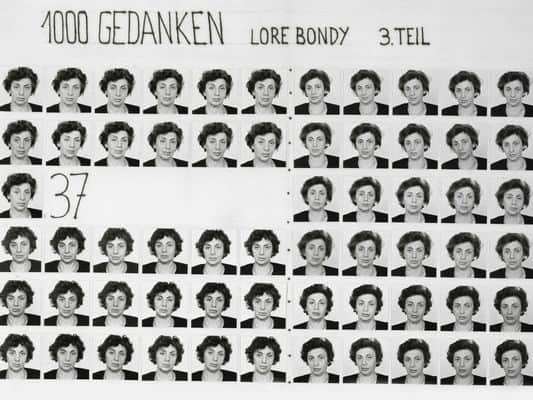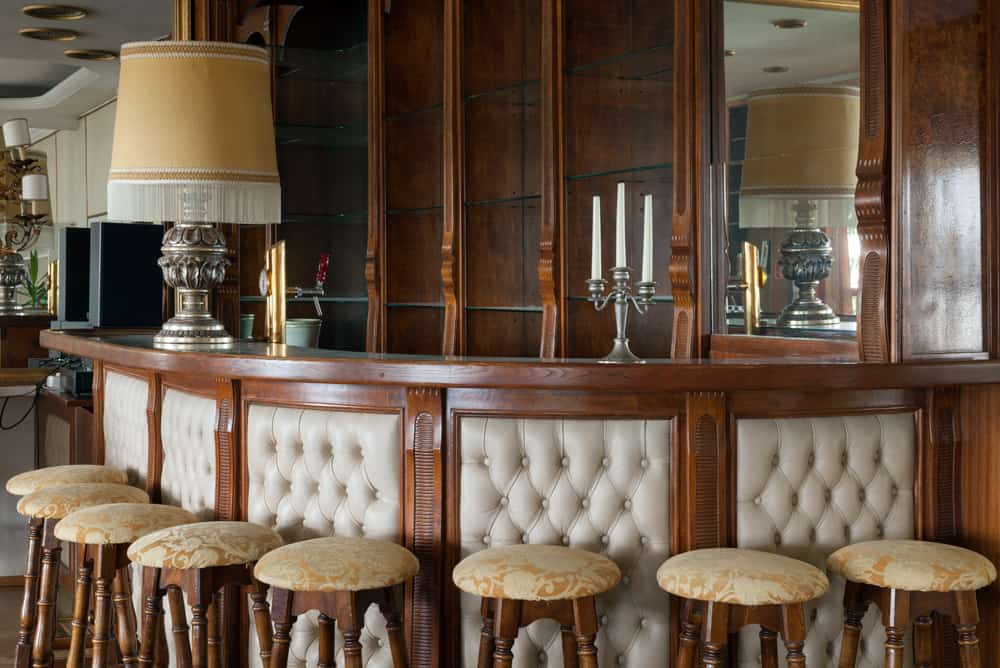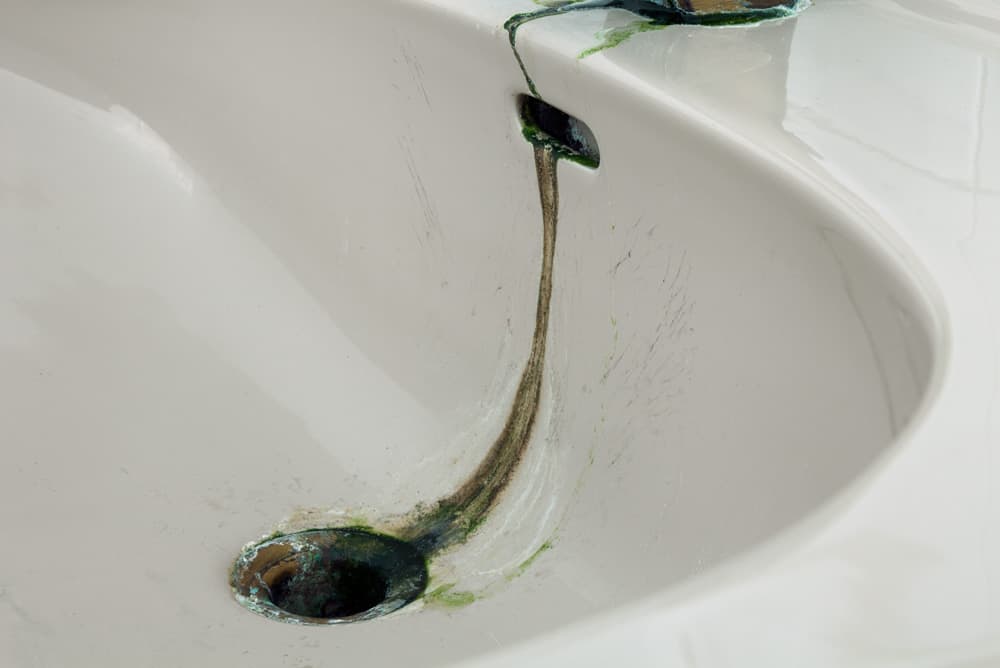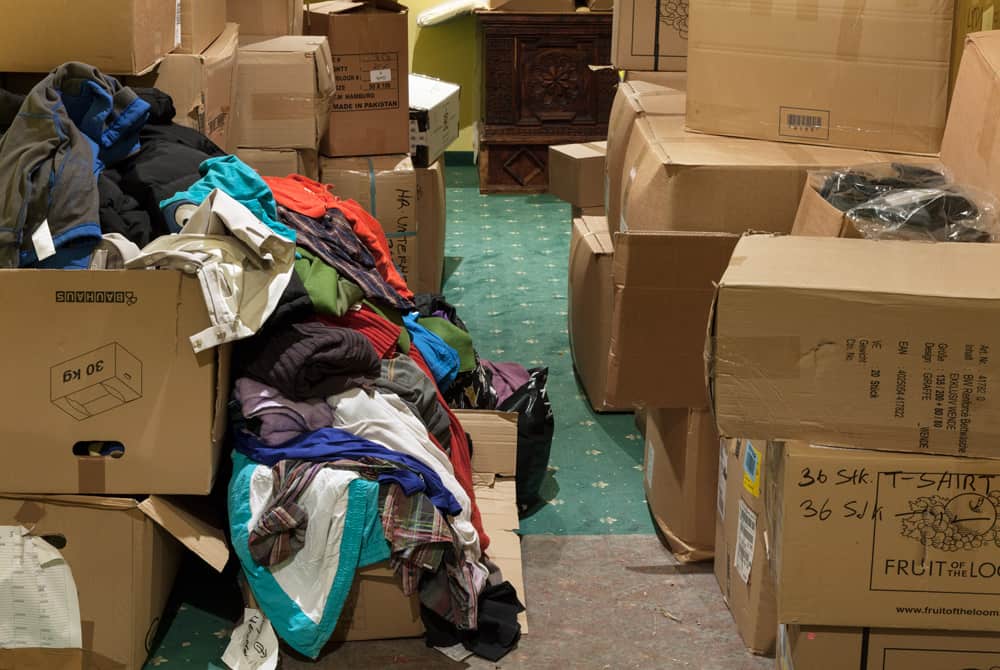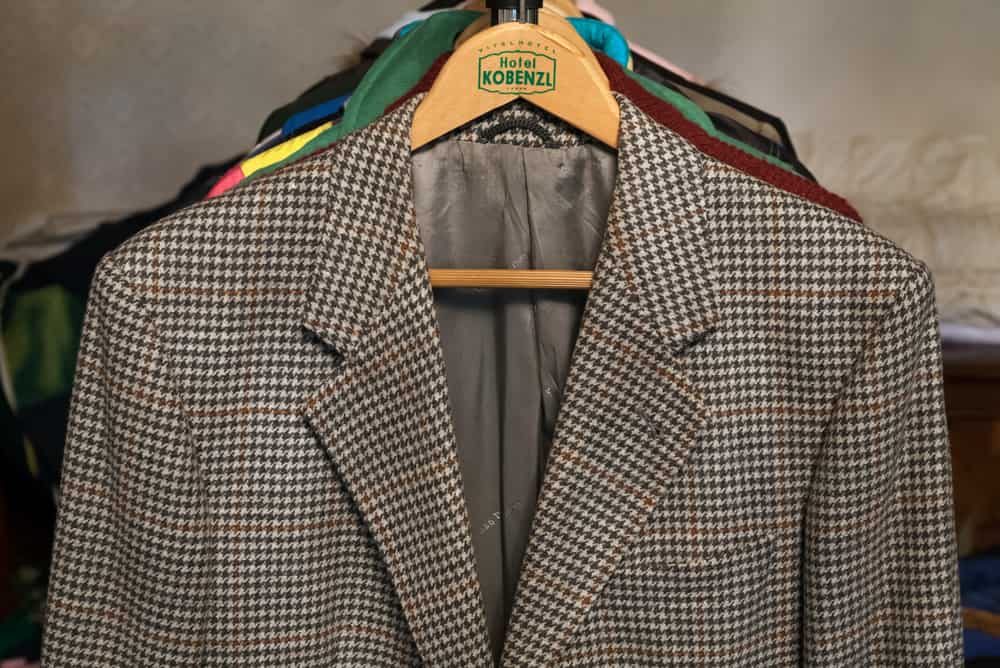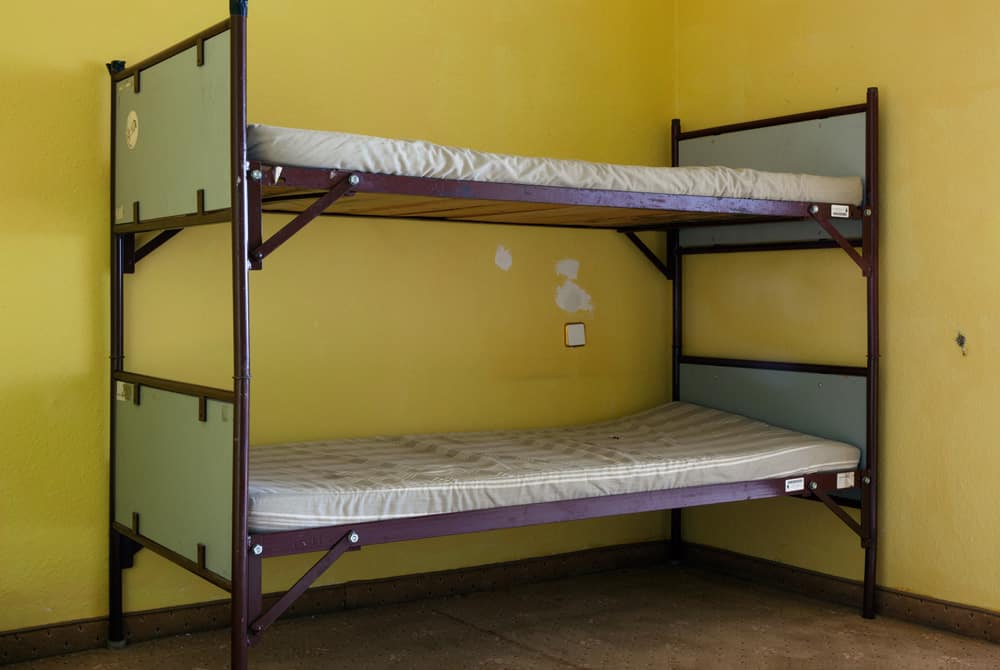'A Google Wife' by Olga Bushkova. A Photobook Review

When I met Olga Bushkova at the German Fotobookfestival in Kassel in 2015 she presented her first photobook dummy titled A Google Wife for portfolio review. She narrated me how she lived with her husband, an employee at Google LLC, in Zurich where they had moved from Rostov-on-Don several years before (more about it in my interview with Olga for Urbanautica). Olga’s situation appeared to be more relatable to me than to anyone else – after the expatriation we both found ourselves in a very similar condition (in 2011 I moved to Germany following my husband who got a job at a university).
Young professionals who went abroad after their husbands, but living where their spouse found a good job and not where they wanted to. It is a very particular way of life. On the outside such a lifestyle may appear successful and attractive – comfortable household, weekend trips around Europe, the option of ‘sitting at home and doing nothing’ – so it seems from the outside. However, this is only a kind of promo picture that has little to do with reality. For that matter, in the video accompanying the autobiographical project A Google Wife Olga is talking in a vigorous advertising voice about the benefits of socialising in the community of spooglers and their active and exciting life (“spoogler” is a combination of the words ‘spouse’ and ‘googler’ standing for ‘a wife/husband of a Google employee’). However, in the book – as in the reality – everything is not so simple.

In fact the situation is quite the opposite. A woman with a higher education having a career back in her country of origin here becomes a housewife. Most typically, she has to give up all her previous achievements and either receive a new education, starting from scratch, or completely devote her life to housekeeping and raising children.
Previously, in the USSR, it were the wives of the military who moved with their husbands (but this happened more often within the same country), there were no big difficulties with finding a new job, and there was no need for the woman to build a career. Nowadays in the global world things are different – well qualified specialists move to work in other countries and their wives often do not work (oftentimes they cannot receive a work permit for several years, and if they get a job eventually – it is usually low-paid and unskilled).

The photobook by Olga Bushkova tells about an attempt to reassemble one’s life in a new place piece by piece, and a desperate striving to find substitutes for friends and family left behind back home. All one gets in the end is just loneliness and lack of confidence as we can see on one of the photographer’s self-portraits in the book – she sits, deranged, by the table after a party (three almost identical frames stand in a sequence in her visual narrative creating an effect of a moving picture and referencing the video).

The book A Google Wife in its style and presentation resembles a series or even a reality show, where characters must stay in a confined space. Noone looks directly into the camera, the frames are shot automatically (during the meetings and parties Olga put the camera on a tripod and pressed the remote control with a two second delay so as not to control the result), the quality and composition are not particularly important, it is only the authenticity and truthfulness, the effect of presence that matter. The reader feels like a voyeur, ‘peeping’ at someone else’s everyday life. While flipping through the pages it is felt that you can almost hear the conversation in the background that people who are compelled to spend a long time together occupy themselves with. They might appear like close friends (they are most likely not).
The protagonists stay the same – Olga and her husband, the set doesn’t alter either – just like a theatrical scene (that is the flat they rent). Only the faces of the unknown people alternate – the singles, couples, couples with children, who appear from nowhere and vanish again, – all this resembles an endless interview with ‘candidates’ for the positions of new friends and family.
The interior is a standard IKEA room that tells nothing about its owners. You can perceive the lack of unity between the heroes, only in a few pictures they look into each other’s eyes. Often their glances are directed downwards: they study the table, the floor, their own plate (maybe, they just want to escape the necessity to look for a new conversation topic that has suddenly worked itself out?). They just sit deep in their thoughts, melancholic, turned in upon themselves.

People eat, drink, play cards and a board game with a name that speaks for itself: Ticket to Ride. Europe (about travelling across Europe by railways). And the style of interaction here clearly resembles the companionship of random travellers who find themselves in the same train compartment.
Apathy and monotony are artistic tools for Olga to tell her story – and she is not just talking about it, she is making the viewer feel it.
The members of the jury who awarded Olga the first prize last year in the Fiebre Dummy Award (Spain) noted: ‘It’s a risky job from the editorial point of view, it’s brilliant how it addresses issues such as the role of large companies in the good work-life balance of their employees, the feminist review of the role of women in the professional context and the treatment of the laws on labor permits for foreigners.’
The sincere and, I absolutely agree, feminist, Olga’s photobook challenges the existence of woman in the contemporary global world. It echoes the book of another winner – this time the Moscow Photobookfest 2017, the Japanese photographer Ikuru Kuwajima, – I, Oblomov. His visual story is also about the involuntary inactivity and inability of a smart and educated subject to find a worthy employment. However, if his ‘Oblomov’ spends time alone, lying on the old couches and looking at the ceiling, the ‘Google Wife’ is carried away by the imitation of activity, immersed in ‘worldly vanity’, ‘amidst a noisy ball’, but at the same time, in the end, she turns out to be no less lonely.

ISBN 978-84-697-6911-9
Dalpine/Fiebre Photobook, 2017
Design: Olga Bushkova + Astrolab Estudio
Prepress: La Troupe Printed by Artes Gráficas Palermo
207 pages
Hardcover 22,9 x 16,2 cm
You can order the photo book here
Text by Natalya Reznik.
'Meeting Yourself at the Bottom of the Extinct Sea'. 'Sea I Become By Degrees' by Natalia Baluta. A Photobook Review
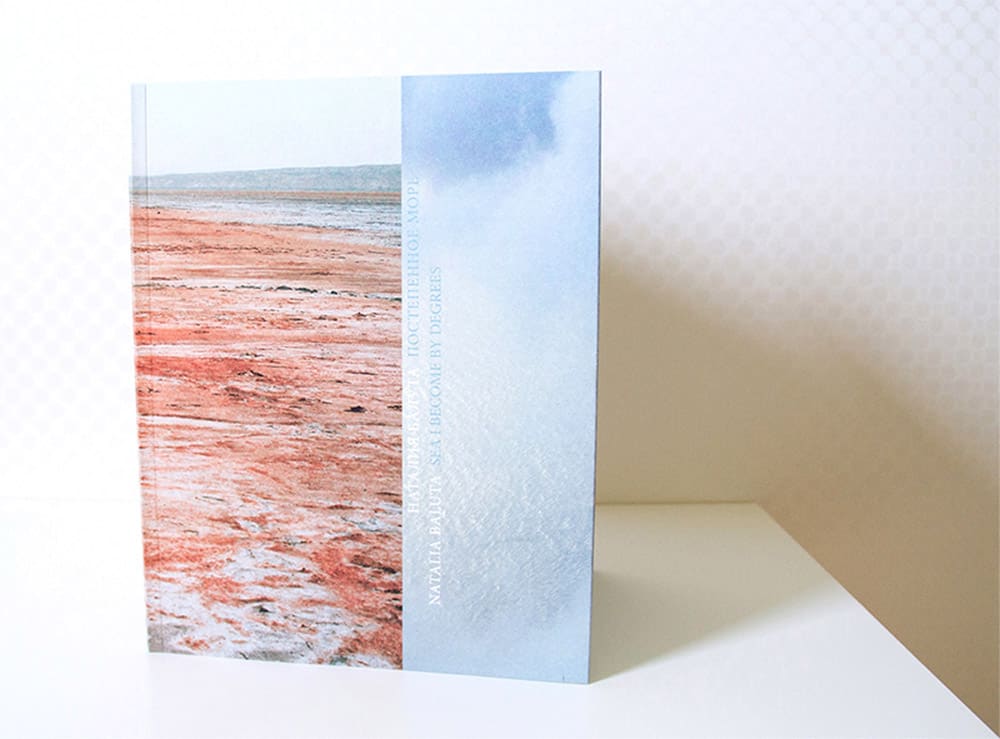
‘For the first time in the course of history modern man on this earth now confronts himself alone... We live in a world which man has changed so completely that in every sphere – whether we deal with the tools of daily life. Whether we eat food which has been prepared by machines, or whether we travel in a countryside radically changed by man – we are always meeting man-made creations, so that in a sense we meet only ourselves’ (Heisenberg W. The Physicist’s Conception of Nature).
Natalia Baluta has given me her new book Sea I Become By Degrees (Postepennoye More in Russian) when we meet at the Book Market in Amsterdam. When I hold the book in my hands it feels light and flexible, almost weightless despite its rather large size (a little smaller than the familiar A4 format). The book is terra-cotta orange and transparent blue – the colours of the desert and water.Read more
'New Landscape' exhibition opened in Russia
The Boris Yeltsin Presidential Center announces an exhibition ‘New Landscape’ presenting seven photography projects reflecting on the transformation of the post-Soviet landscape. The exhibition opens in the Art Gallery space on March 16, 2018.
Artists: Alexander Gronsky, Anastasia Tsayder, Liza Faktor, Max Sher, Petr Antonov, Sergey Novikov, Valeri Nistratov.Curated by Anastasia Tsayder and Petr Antonov.
Group exhibition New Landscape features seven photography projects exploring the landscape as a means to reflect on the new post-Soviet culture. Observing how the man-made landscape is reshaped by the transition from the industrial to the post-industrial, the works show how these changes are further augmented by the transition from the planned economy to the free market, from the Soviet to the post-Soviet. Brought together the works create a portrayal of what may be a transformation of a landscape and a culture unprecedented in scale and pace.

The works of Liza Faktor, the earliest among the featured projects see Siberia as the Russian Frontier, once partially tamed but deserted anew as the centrally planned economy failed. Alexander Gronsky’s Less than One explores the outermost regions of Russia, where the average population is less than one person per square kilometre. Documents of Nature by Valeri Nistratov, mainly shot along the fringes of Moscow, the country’s megacity capital, looks for the marks of the nascent capitalism at the borders of the urbanised and the rural. The works by Max Sher and Petr Antonov explore similar changes, except they use the built environment to record the emerging aesthetics. Sergei Novikov’s Grassroots presents the landscapes of contemporary Russia as a gigantic backdrop for Russian amateur football as the country prepares for the 2018 World Cup, and it is this backdrop that draws principal attention. Arcadia by Anastasia Tsayder, similarly to Valeri Nistratov’s Documents of Nature, looks at the relation between the human and the natural, but instead of finding an opposition discovers a strange co-existence. If there is a conflict between the two it is the nature that is winning as it is re-conquering the urban space.
The interest towards the critical interpretation of the landscape in Russian photography rises in the 1990s and reaches its peak in the 2010s. The artists react to the social changes and observe the paradoxes brought about by them. Their works focus on the conflict between the man-made and the natural, the urban sprawl, the construction of the uniform shopping malls and office buildings, the transformation of the Soviet centrally planned landscape by the market economy—all these come as manifestations of the new post-Soviet landscape being born.
The exhibition is accompanied by a public program which include a series of panel discussions, lectures and films on the subjects of landscape, cultural studies and contemporary photography.
Exhibition New Landscape is presented in Ekaterinburg from March 16 to May 27, 2018 at the address: Yeltsin Center, ul. Boris Yeltsin, 3, Art Gallery Yeltsin Center, 2nd Floor. Opening hours: 10.00 – 21.00.
Thinking moments by Nuno Moreira
Is serious surrealistic photography possible nowadays? Surrealism, the universal revolutionary project of the 20th, has lost its psychological implication, its orientation on “humankind liberation” and first and foremost on the liberation of author’s subconsciousness. Now often the successful fine art has external surrealistic features, and that’s just what an ignorant spectator identifies easily as an “art” (because it is beautiful, obscure and he isn’t able of it himself).
“Strange, obscure, grotesque, paradoxical dazzling beautiful images – this is what mainstream audience calls “surrealistic photography” — from the preview to a lecture dedicated to surrealistic photography by Moscow photography expert Irina Tolkacheva.
Does the two last photo books of Portuguese photographer Nuno Moreira which apparently refer to the cinema and photographic experiments of the 20th belong to the same “fine art” surrealism?

The first Moreira’s book “State of mind” contains classical journalistic and street photography of highest quality. But in spite of its perfect composition and captured “decisive moment” Moreira claims to be more interested in a “thinking moment”. He tries to capture some “existential” moments when people are in the crowd but at the same time in their own world. Beginning from “Zona” Moreira turns his gaze inside himself, analyses his own inner world and makes the performers “play” what he feels (that’s why his photography inherently becomes performance documentation). His third book “She looks into me” is according to his own statement a certain “Zona” follow up.

Moreira’s works don’t have any commercial “fine art-ness” at all. His black-and-white images are often blurry, fragmentary, built on the play of light and shadow and are absolutely free of an intended (often “photoshopped”) “surreality.” His allusions to surrealistic films are fairly clear though. At that, some stills you have apparently seen, but you can’t remember where exactly – as in Cindy Sherman’s approach, and some stills are very clear – e.g., the image with scissors raised above the tongue is an homage to Buñuel’s Andalusian Dog.
There is also little of some “unseen-ness” and technical gimmickry in the “Zone” book. In the first book we see that Moreira can make substantial classical street photography; in the two others, he gets onto stages, which resemble of theatre and undoubtedly of cinema.
While working on “Zona,” Moreira was reading Jung. He was writing his dreams in a dream diary for two months, and then he started to stage situations from these dreams with a professional dancer. In his words, he hasn’t staged the events themselves but rather his mood and feelings about them, creating the “archetypes.”

“I shot under the guidance of a script, very similar to a movie”, – says Moreira. Working as a film director, “staging” the stills from his dreams, he surely comes ever closer to the classical surrealism of Salvador Dali. As is well known, the artist started to work right off after awakening, when the brain hadn’t broken yet free from subconscious images and waked up in the middle of the night with the same purpose. This method corresponds with one of the psychoanalytical approaches – recording of dreams right after awakening.

Altogether Moreira’s way possibly presents a rather common way of a contemporary creative photographer: to move from enthusiastic research of the outer world to analysis of the inner world.
His work with the staging of his own dreams also looks a therapeutical one – e.g., playback of nightmares can be a possibility to meet them de facto, experience them and get over the fear at last.
In the “Zone” book there are some cut-ins from black velvet thick paper, which smother the reader like the darkness of the night. On them, there are handwritings of Jose Luis Peixoto, the writer. “The text helped to create more “silence” and pauses for the book”, Nuno Moreira admits. Also, these cut-ins as if divide one dream from another being total oblivion and blackness – or a dream forgotten after awakening?

In the new Moreira’s book, “She looks into me”, which is going to be published in January 2018, the photos have been shot with the professional actors – this time at a studio. Fleshy black-and-white portraits, which again remind together of Louis Buñuel and Francesca Woodman, are overfilled with touches. These are at that not in every instance of an erotic kind but rather of a medical, investigative one. Turning over the pages of the book, I couldn’t get rid of remembering the 19th-century photographic exercises, made by Dr. Duchenne de Boulogne in Salpêtrière Hospital. The fingers, stopping one’s mouth; the hands which (by force?) hold the head; the head of a woman which helplessly, almost biblically, falls on others naked shoulder; the fingers which close the eyes – as in the “Zone”, in the “She Looks Into Me” book the photographer continues to explore the theme of touches, which are more alike palpating of things and people by a curious blind investigator.
Text by Natalya Reznik.
Max Eicke «Dominas». A photo book review
A young German photographer Max Eicke has sent me his book “Dominas” for a review long enough ago: this large-format book in rubber red cover (a real eye-catcher, according to Joerg Colberg) has been published by Kehrer Verlag way back in 2016.
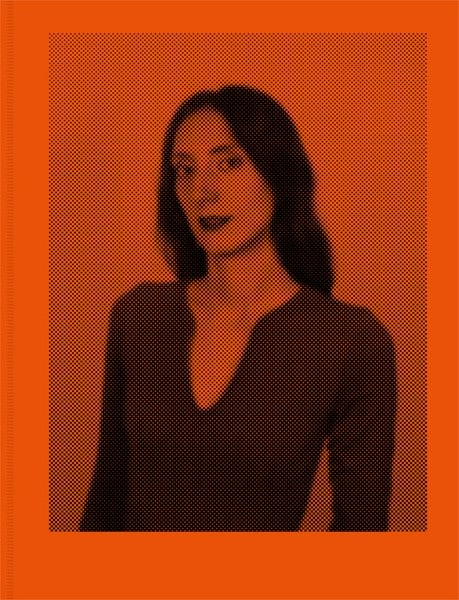
We know each other with Max for a long time: several years ago I wrote for Goethe Institute a review of the most exciting works by young German authors, and his project had presence justly there.
Max had studied photography in Munich. After graduation, he moved to London for life and work. While working on his diploma project dedicated to women performing the dominating role in sex Eicke has traveled all over Germany to find models. From 170 women whom he tried to get involved in the project, 146 refused to. Portraits of the rest and extracts from anonymous interviews with them were published in the book. Max came to his models being equipped with a large-format camera and a book of Holland photographer Rineke Dijkstra whose visual style in portrait photography – a cold, strict, but at the same time, fragile – was an inspiration for him. In the book, aesthetic staged photos taken by himself in a studio thus colliding a standard representation of these women with results of his investigation and offering the spectator an opportunity to make his own conclusion.
The red rubber (latex) cover of the book is perfect for Eicke’s intention: the book “clothes” visually rhymes with latex outfit of the “dominas” themselves. On the red background, there is a printed in black typographical raster portrait of a girl in somewhat neutral dark clothes which tells almost nothing about its possessor. There is no title at all – we see it only on the turnover. The dots of typographical raster send us to it shall preferably be about criticism of representation.
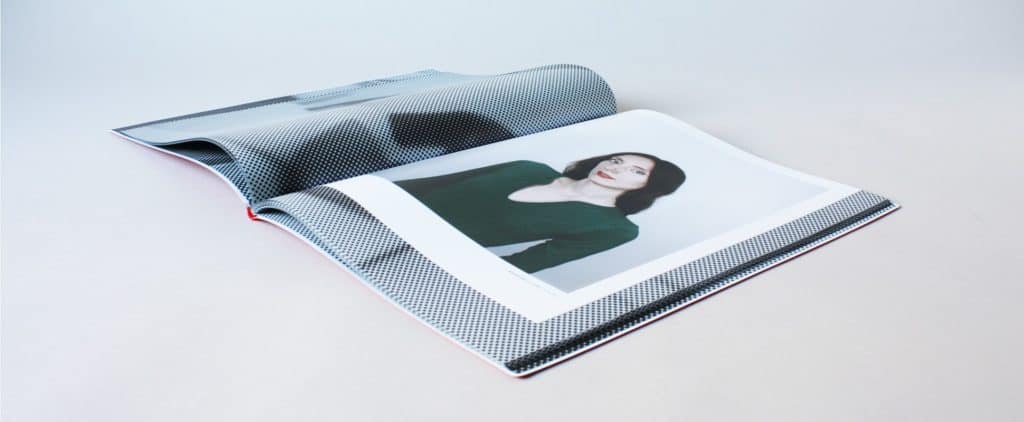
The edition has a rather large size even for a photo book: 26 to 34 cm. But the color illustrations themselves are more modest in their scale – they play a role of inserts of a smaller size alternating with big black and white sheets. There we see some fragments from the BDSM scenes (which are printed in the same typographical raster and resemble movie stills) and with red paper A4 format sheets where the author gives the word to the real heroines through extracts from their interviews classified under specific themes: power, desire, prejudices, perversion, etc.
The book is “built” very clearly: alternating different-scale images give the rhythm and work for the author’s idea to match “common representation” about dominas (which are in raster fragments) and real women of flesh and blood who had tried on themselves a role of a sexual “mistress.” The Eicke’s portraits are somewhat heterogeneous. Some of them are so flattering that there is indeed some magic around reminding of this favorite Rineke Dijkstra (e.g., a picture of a young lady under the name of Bizarrlady Emy) who looks like a vulnerable and a little bit sad fairy princess dressed out in a theatrical corset, pearls, and lace.
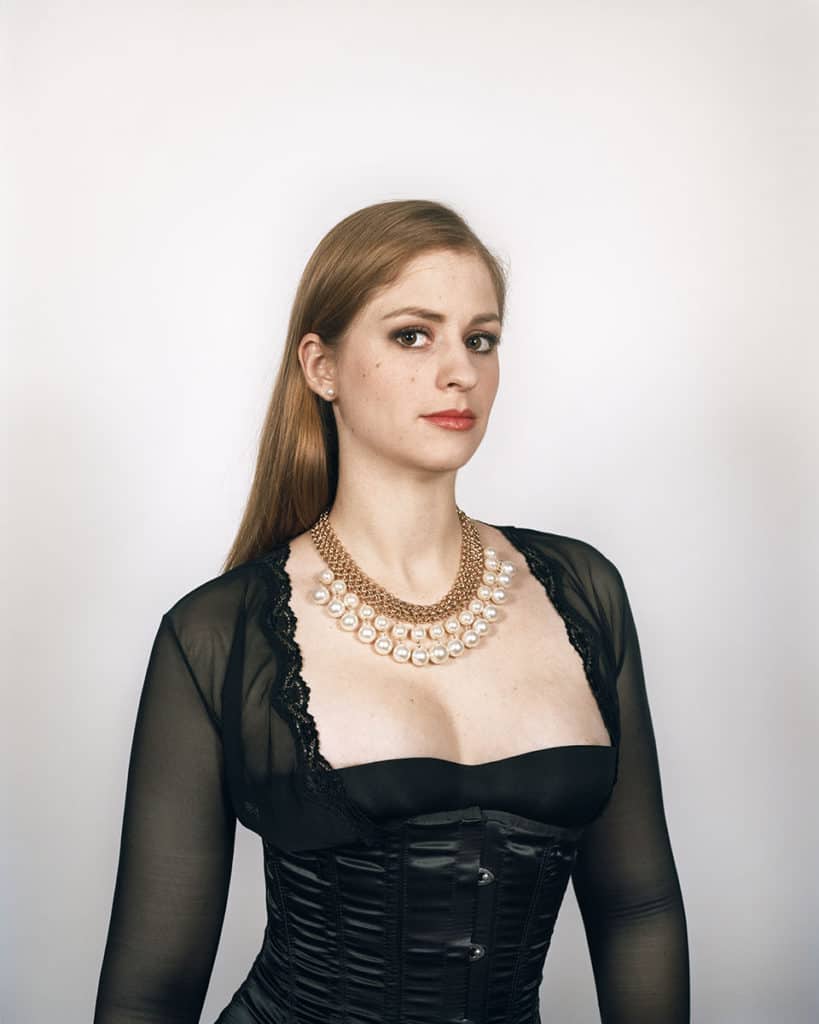
Others just mainly look at the large-scale Eicke’s camera straightly, with dignity and rather aristocratically demonstrating some excellence (what is possible due to their occupation), sometimes resembling of heroines of fantastical films about future in cosmic and erotically-kitsch outfits a la Barbarella.
Typographical raster used by the author in his book refers to the idea of media representation which often presents us an image far from reality, a certain “mask”, a stereotype. But does Eicke himself come closer to that reality? Did he succeed in unveiling his futuristic queens? Rather no; we see only a faithfulness of the mask. The heroines are posing with dignity and present their professional image, but their insides are more often closed. Maybe portraits made in home scenery rather than a studio one would help better. Turning to Rineke Dijkstra, there is no way to forget that she often shoots her heroes in “after” condition, after climax. That allows her to draw the psychological state of them so delicately and sincerely – when they are unable to play themselves in the front of the camera (e.g., a torero shot right after a fight with a bull). But maybe Eicke didn’t make a point of it and just gave a possibility to his heroines (who he profoundly respects) to demonstrate themselves with dignity and with not a shadow of objectivization and to tell about their experience through anonymous texts-reflections in the book.

Anyway, the Eicke’s photo project is far from a documentary essay about life of female sex-workers (like, for example, the project ‘Kurfürstenstraße’ of his colleague from Berlin Kathrin Tschirner). The author is quite more interested in the power phenomena investigation and the search of personal in collective. Besides, it is a beautiful and perfectly structured book with proper portraits which is nice to be held in hands and to be put on a shelf at home.
Forcing the spectator to touch his creation, Eicke imperceptibly puts us into his game: the one taking up this book and tactically enjoying the book medium… automatically becomes a latex fetishist. But all of us, photo book lovers, are at some point fetishists by default.
The first photo books which made it - winners of ViennaPhotoBookAward 2017
Mariya Kozhanova 3 place of the book dummy competition of Vienna Photobook Festival 2017 for the dummy “Sisters”
1. Where are you from? Where and when did you study photography?
I come from Kaliningrad — the most western city of Russia. I am considering myself as a self-thought photographer, because I only took classes of analogue printing techniques at the Kaliningrad Union of Photographers in the early days when I just started to get interested in photography, and last year, I was nominated for Joop Swart Masterclass organized by World Press Photo, my first real photography class.
2. Is it your first photo book? If not the first one, please give the links to the others
It is my first book.
3. Have you ever received photographical prizes? Have your books been shortlisted?
I am a winner of Fotomania (2011), Feature Shoot Emerging Photography Awards (2016) and I received the Grand Prix at Faith Love Youth competition (2016). I am also winner of the Portfolio Review at 4th Singapore International Photography Festival 2014, Kaunas Photo festival 2015 and PhotoVisa 2015.
4. What is your book about? Could you tell us a bit about the project: how has it started, how have you worked on your dummy and why, in your opinion, has it won the prize?
My book Two Sisters is a poetic story about youth at its most powerful and fragile stage. It is a visual poem. The moment of full blossoming in nature or in human life is very short and is like a change of seasons. In my book, I capture this moment so we could come back to reside it over and over like a looped moment of the most vulnerable stage of beauty. As many things in life, this book happened for me as a chain of coincidences that took place. I photographed this body of work quite a long time ago, but it rarely was presented, because I couldn’t find for myself the perfect way to present it. And after some printing experiments earlier this year with tracing paper, I saw the pile of images as a final book, as a sequence that you are taking as one piece and I just couldn’t isolate individual images.
“Two Sisters”
2017
3 copies
210x148mm
30 pages
Viacheslav Poliakov, 3 place of the book dummy competition of Vienna Photobook Festival 2017 for the dummy “Lviv – God’s Will”.
1. Where are you from? Where and when did you study photography?
I am from Kherson, Ukraine. Now I am based in Lviv, Ukraine. Have no photography education, Internet education, I guess.
2. Is it your first photo book? If not the first one, please give the links to the others.
It is. And it’s not even a book, it’s a dummy, I have to find a publisher to make a book. Some other projects you can find here – via-poliakov.com. But I never tried to promote them. It’s the first time.
3. Have you ever received photographical prizes? Have your books been shortlisted?
I’m laureate of the Krakow Photofestival Showoff 2017 and Lodz Photofestival Grand Prix 2017. And shortlisted to the Prix Levallois 2017 with “Lviv – God’s Will” project. This dummy was also presented at Odessa Batumi Photofestival 2017 and as a part of “Ukrainian Dummy Award” selection by “Rodovid” publisher at Polycopies (Paris, France).
4. What is your book about? Could you tell us a bit about the project: how has it started, how have you worked on your dummy and why, in your opinion, has it won the prize?
This story is about those of us with whom life just happens. It takes place when the connection between cause and consequence is no longer coherent. I am documenting a naïve visual subculture of public space, which has become widely spread throughout Ukraine after the fall of the Soviet Union faced globalization. For me, a central peculiarity of the culture is the absence of conscious author. The objects of city environment are formed by means of accidental interaction of unrelated people, by mistakes, destructions, wild vegetation. Finally, by no one. Everything is God’s will. All the objects collected in the book were photographed without any interference on my part. However, in most photographs, I сut off the background in order to isolate the subjects from all that chaos, which usually surrounds them. “Lviv – Bozha Volya (literally God’s Will)” – a bus route, which connects a city with a small village lost in the forests on a very border with the European Union. “Bozha Volya” in Ukrainian derives from the same word root as madness. The name is an artistic image and has nothing in common with geography.
The project takes its roots in works of artists of my hometown Kherson. They have been ever interested in strange things. But it is too deep. The project started from my rejection of the surrounding urban culture. Thanks to Internet, everyone can start perceiving oneself and ones’ culture as something exotic. I took photos of things which I don’t like. What made me emotional (in negative sense). In first sequences of pictures I had a desire to describe the real urban area. While working I understood that I don’t need to describe anything. I need to make something. Something which could help me to accept the reality. When I got a feeling that it is starting to happen, I started working on the book dummy. A half year ago I began sending the dummies to the competitions. I have no idea why my book was selected. Maybe after ten more revues I will understand it.
(It has been recently announced that Poliakov is among the winners of FOAM Talents 2017. His works will be published in the Talent Issue of FOAM Magazine and exhibited in Amsterdam. Congratulations!).
Libuše Jarcovjáková 2 place of the book dummy competition of Vienna Photobook Festival 2017 for the dummy “Praha, Berlin, Tokyo”
1. Where are you from? Where and when did you study photography?
I was born in Prague, Czechoslovakia, nowadays Czech Republic. With the exception of several years which I spent in Berlin I was always living there. I started to study photography at the age of 15 on the Prague Graphic School and later in the early eighties on the FAMU – The Film and TV School of the Academy of Performing Arts in Prague.
2. Is it your first photo book? If not the first one, please give the links to the others.
The Black Years is my first photo book. Although I was intensively photographing almost the whole my life I have rarely published and exhibited my work. Approximately ten years ago I started to work with my archive and step by step I am revealing what I have done in the past .
3. Have you ever received photographical prizes? Have your books been shortlisted?
No, never.
4. What is your book about? Could you tell us a bit about the project: how has it started, how have you worked on your dummy and why, in your opinion, has it won the prize?
The book “The Black Years” introduces my authentic photographic and literary journals . Spanning the years 1971–1987, the journals wring out the black-and-white everydayness of Prague, Berlin and Tokyo, uncovering the beauty of the era as well as its decay. The book offers a combination of photographs, journals and letters mapping out 17 years of my raw young life. I have always moved in extremes. I have lived in bars, worked graveyard shifts at a printing company, gone through dozens of lovers of both sexes, photographed at semi legal gay clubs, even taught the Czech language to Cubans and Vietnamese – while, at the same time, moving through respected artistic circles. I was acquainted with the Czech photographic elite. I photographed in Japan, working for global brands, and then dove straight back down to the bottom, into the black-and-white everydayness of the Communist regime. I was continuously overstepping the borders and social stereotypes, pushing through the era’s stiff manners and morals.
The Black Years documents the real life of people living in Czechoslovakia in the 1970s and 1980s – or, perhaps, the life they were afraid to live. And when I moved further, after my emigration to West Berlin I continued in the same direction there. I photographed and documented everything I saw – and The Black Years is the living proof. The book was published in the December 2016 by Czech publisher “wo-men”. For the portfolio review I prepared the light version of the book in English “Praha, Berlin, Tokyo”, which was more like monograph with almost no text, just images. I am still on my way seeking the publisher who will publish my book in English.
p.s The winners of the dummy competition Robert Pufleb and his colleague Nadine Schlieper (both come from Dusseldorf) unfortunately didn’t find time to answer the questions for the blog telling that they are too busy at the moment with the work on their book publishing (btw, it is also their first book dummy ever). The idea of their winning book project “Alternative Moons” one can get here.
Jana Romanova:“Waiting”. Photo book review
No title is mentioned at the cover of the book by Jana Romanova. There is only a photo of crumpled sheet reminding of antique drapery, which, probably, hides something sensual and fleshly.
The name could be only found under the cover – hand-written inscription printed with the help of transparent UV Varnish: “Jana Romanova, Waiting”. The letters are barely seen as if someone is whispering in order not to awake.
You are opening the book and it feels like if you were peeking into a stranger’s room without ceiling. The page opened vertically is turning into a white wall. Near the wall there are sleeping characters of the projects – men and their pregnant wives photographed from above. You can’t stop to feel that you are a giant peeking from above into a dolls house. The very gesture of the book opening – without any designer’s bells and whistles – is creating a maquette of the bedroom and entering private domestic scenes, which are normally hidden from a stranger’s gaze.
I am looking at the sleeping pregnant women – a lot of them look tired, their faces and hands are swollen. Some of them must combine two roles at the same time – to care after their first children – who are sleeping near-by – and to bear a baby. Nevertheless, some of them are smiling at sleep and I start to remember what I had to go through one year ago. At the late stages of my pregnancy I had insomnia. It was hard to find a right position with the big belly, hands and feet were swollen, the moving baby inside didn’t want to sleep, it was always too warm and a long maternity pillow didn’t help much. Moreover, the thoughts about upcoming birth weren’t the best means against insomnia. Actually, the sleep of pregnant women isn’t that calm and serene. But the night thoughts in anticipation of the new phase of life are frightening and pleasing at the same time.
Jana started shooting her project several years ago – when suddenly there were fewer and fewer parties and her friends – mostly in their mid 20 – started thinking about families and children. The project became a kind of research for her – what is happening with them, how did they abruptly turn into the serious adults and why the fun and easy life they used to live was no more relevant and attractive.
Armed with a monopod and a camera with remote control Jana went to take photos – she came at dawn to the flats of her models, waited till they fell asleep and took the photos from above using the ladder. Once she took the photos of friends and of friends of friends, she made a call in a “Russian Facebook” (social network VKontakte) and then visited the flats of strangers. The interiors of the flats varied extremely – from small rooms with wallpaper made from old newspapers and cracked wooden flooring to stylish furnished minimalistic apartments with black bed linen. The generation she depicts is the last one born before the collapse of the Soviet Union and their children will know about this time only from their words and photos.
An interior can narrate a lot about its dwellers – even unwillingly. Sleeping people can not “construct” their desired identity (the opposite to ‘selfie’). When can one be more vulnerable and control less himself than while sleeping? These family portraits were made without makeup or matching ‘family look’ in clothes, without decent staged postures and flattering artificial lighting. And thereby the message of the project “Waiting” is becoming suddenly close to the humanistic concept of the exhibition “The Family of Men” (1955, curated by Edward Steichen, MOMA) – we are all the same, we all wish to love and to be loved, all we need is to live and bring up our children, we don’t want to make war…
Very competitive and socially polarized Russian society is turning here into a very homogenous one: the Russians got rid of social masks and trustfully let a stranger to enter their house and, oddly enough, in the undone look and cozy domestic scenes, without our usual “armour” we all look very similar to each other. And peeking through the absent ceiling into the small world one finds there not just the friends of friends, but him/herself, as if flew out of the body.
Interview with curator Steve Bisson about Paris Photo 2016
“The Japanese photography is still going strong”

Hi Steve((Steve Bisson (Italy), founder of http://urbanautica.com, curator, lecturer. More about Steve in the interview.)), you’ve just come back from ParisPhoto, how did it go?
I want to start off by saying that I was very happy to return to Paris. Last year’s edition was flawed and influenced by the terrible terrorist attacks. In hindsight, I think many of us experienced a desire to play down those days and to share those experiences.
ParisPhoto remains the most important photography event in the world. Not only in respect to what happens during the show at the Grand Palais, but also considering the whole set of events and meetings that the city offers. The atmosphere is unique and it is visited en mass, which makes it unlikely that you can see everything and everyone.
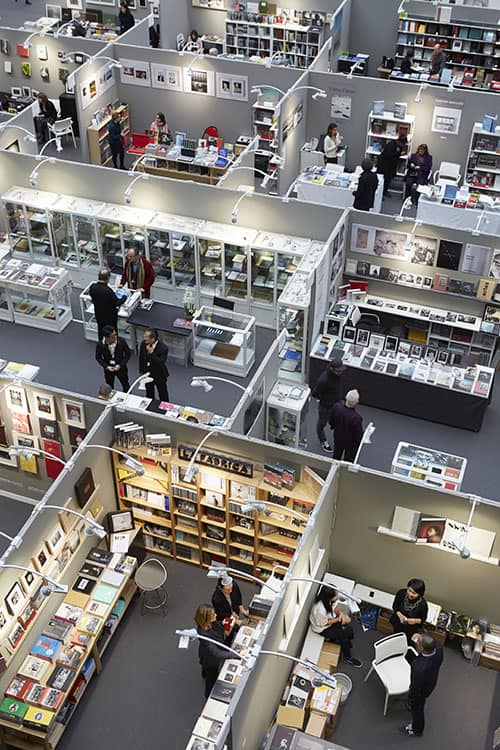

The Grand Palais course offers a broad and excellent overview of some of the most important galleries. It should be noted, however, that some of these galleries are not specialized exclusively in photography. As a result, we see a growing number of artists who produce weird images rather than photographs. You could observe that there are a lot of artists who shouldn’t be there and that there are a lot of photographers who should be there, but aren’t. I guess that’s why books, rather than galleries, are becoming more appealing to photographers.
I know you were in Paris for educational activities as well…
Yes, this year I’ve been pretty busy with a whole range of activities that took place at the Paris College of Art. This reduced the time available for exhibitions and research, but I was happy to be able to work with students and to have discussions with different professors. I was invited to do a presentation of my curatorial activities and at the same time I coordinated a screening session about experimental video on architecture. This is an area of research to which I have devoted myself for the past five years through Filmessay.

I also worked with Francois Ronsiaux, director of Plateforme Gallery, for an exhibition of student works selected by the University of Arts of London, Berlin University of Art & Design and the same Paris College of Art. Besides their work, also that of French authors such as Patrick Rimond, Dominique Clerc, Vincent Debanne and Pierre Folk was included.
I must admit that I was a bit skeptical at first to bring together so many different kinds of work, even though, the theme of the exhibition ‘Blurring The Lines’ was sufficiently broad. I experienced it as an installation exercise rather than a strict curatorial process. I believe that these exercises are very useful when implemented in schools away from all the whims that lurk in the atmosphere of galleries and museums. Taking that into account, the school allows for greater experimentation. So I’m very happy that I have been invited to repeat this exhibition during the next edition of ParisPhoto in 2017.



Any interesting exhibitions you have visited…
I would like to mention three. The first one was a surprise. One morning I attended the workshop of curator Susan Bright. After a delightful reading she led us to visit the exhibition ‘Vivre!’ at the Musée de l’Histoire de l’Immigration. The exhibition brings together 70 works from the collection of Agnes B, from Alighiero Boetti to Malick Sidibé and Henri Cartier-Bresson to Ryan McGinley, to name a few. I never expected to see this exhibition in that kind of museum, but the curator did a very good job. Moreover, the permanent collection, which also houses several photographic projects, really deserves a visit.
Later I visited the exhibition ‘Soulèvements’ at Jeu De Paume. After having read several positive comments I had high expectation of this exhibition and I must say, I was very impressed by the curatorial project. It offers significant historical references, in-depth insights and various authorial perspectives on the subject of individual and social “upraising”. The curatorial team has done a remarkable job, and the exhibition is worth a slow observation and perhaps even more than one ((The curator of the exhibition ‘Soulèvements’ is the well-known philosopher and art historian Georges Didi-Huberman.)) . The catalog is well done and a complementary support.


I also went to the multicultural place Centquatre. It is not a museum, nor a gallery. It is a lively and big cultural center in the north east part of the city full of young people playing and dancing. Here I visited the exhibition of Hans Op De Beeck which is spread out in several rooms through a variety of installations. The meditative spaces allows one to relate to and breathe in the atmosphere designed by the artist for his works.


What about books?
I could talk extensively about this. I think that, for photographers, publishers will now be seen as a real alternative partner to galleries. The number of operators is increasing, and the amount and editorial quality of supply is really impressive. Personally, I turn more and more to publishing rather than to galleries when it comes to discovering new talents in photography. ParisPhoto offers significant opportunities from this point of view. Grand Palais has a section dedicated to magazines and publishers. It is not intended to be thorough, but rather to offer interesting contacts with well-known publishers such as Steidl, MACK, Aperture, La Fabrica.

I also visited Polycopies which was held in the picturesque setting of the boat moored on the Seine. There I had participated more actively as Urbanautica as we were present with our book series published by L’Artiere Editions. The feedback was very positive. For two days there was a bustle of people interested in photography books and there were many opportunities to meet the authors during various book signings. I believe that the experience of Polycopies has again shown the liveliness within publishing, the quality of many productions and also a fair market linked to collectors or merely passionate people.
Apart from that, one could attend Offrprint, another very popular big event related to books and self publishing, in addition to a whole series of individual events, meetings and presentations scattered throughout the city. Another example was the special party organized by L’Artiere Editions, which again, attracted a lot of visitors.



Did you recognized any new trends in photography?
Well, I would say that the Japanese photography is still going strong. Japanese artists sell pretty well apparently. One can compare it to the furniture designers trend some years ago. Anyhow, I think ParisPhoto offers countless points of view to satisfy all tastes.
Could we say that in general the art market in some way influences the artistic production?
I would say so, adding that this is true not only for photography. Today, as it also often happens in the music industry, communication makes the artist. Compared to a not so distant past in which the artist was rarely recognized by the press in advance, we are faced today with a reverse process. It is the media that determines who is the artist of the moment or what the book to buy is. The Aperture award of this year goes to an excellent author but to a book that, although finely printed, does not seem to stand out enough from other productions. Frankly, I picked better books this year in terms of the strength of contents and fine editorial quality. However, I believe that the situation generates new and different spaces which are extremely challenging and stimulating for people like me. It’s all about research.
Do you have any books to recommend?
Honestly, I have so many. Among those that I would recommend is the book of Gary Green ‘After Morandi’ that I personally curated. I find it so elegant, discreet and profound at the same time. A sincere dialog with the work of the painter Giorgio Morandi which results in a much less descriptive approach than other works done on the same artist. From the books series produced by L’Artiere, the one of Andrea Modica called “AS WE WAIT” remains my favorite. On the other hand, considering new releases, I would suggest Max Pam.


In my shopping list this year I have included the book ‘Santa-Barbara’ by Alejandro Cartagena (Skinnerboox), ‘Small Things in Silence‘ by Masao Yamamoto (Editorial RM), ‘As Dust Alights’ by Vincent Delbrouck and finally, ‘Notes for Silent Man’ by Emanuele Camerini (Witty Kiwi). I have found the latter very poetic, even in its simplicity.



This year I have also contributed to the crowd funding of three books which were all present at ParisPhoto: ‘LAND‘ by Laura Van Severen, ‘The Walking Mountain’ by CALAMITA/À and ‘Diary of an Italian Borderworker‘ by Fabrizio Albertini.



Interview: Natalya Reznik
Friedl Kubelka. One thousand changing thoughts of Lore Bondy
Friedl Kubelka is one of the most known artists working with the problems of seriality and time in photography. She was born in 1946 in London, then moved with her family to Berlin and then to Vienna, where she became famous as an artist. Her works were obviously influenced by Viennese Actionism and feminism, but she refuses to consider them as part of these movements: “I have declared in front of many feminists that I am not one of them”. Her style is unique.
Some of her photographic works - such as the presented this summer in the Museum of Modern Art in Salzburg “Lore Bondy 1000 Gedanken” (One thousand changing thoughts of Lore Bondy), 1980 - consist of hundreds of photographs made in certain time intervals. The shooting conditions are similar and very simple - neutral background, close-up of the face, straight gaze to the camera, no artificial lighting. On the photos is depicted one model only - a brown-haired tired woman in her late 40s, who’s facial expression is slightly changing on the hundreds of “mugshot-style” passport-format photos orderly represented in big glass-boxes. She is the mother of the artist. The artist added to the installation a conceptual text describing the thoughts which the mother had during each shooting (the shootings are numbered in the boxes). Thoughts about pregnancy and children, work, vacations, love affairs and the meaning of life are, actually, hardly recognisable on the photos, but are immediately projected on them by the spectator after the reading of the explanation (and it is, of course, his/her own thoughts about the same things which are quite universal).
The seriality with its monotonous repeating representation of the same object allows the photographer to make hidden processes visible - such hardly visible ones as ageing or change of the facial expression while the person is thinking about something.
Photography is always a great medium for transmission of the idea of change, despite of its ability to freeze only one particular moment. The invisible changes always appear in between the photos, what is the result of comparison of two (or more) of them seen side by side. Is the representation of these changes going to be not only mechanic, but poetic as well depends on the author of the photographs. Regarding the work of Kubelka there is definitely the case.
Hotel Kobenzl. The story of one building
In the gallery, one immediately sees silk upholstered Rococo-style armchairs and crystal chandeliers, which are piled in the dusty rooms. Silver cutlery is unpolished and dry leaves cover the marble floor. The atmosphere is full of suspense, but the compositions from the project “Hotel Kobenzl” by German photographer Matthias Hoch are currently on view at the Fotohof Gallery in Salzburg are calm and serene.
The show is based on several journeys of the photographer to the hotel between 2014 and 2016. The Kobenzl, which is well-known to Salzburgers, is located on the hill above the city, “between earth and sky”. The show consists of about 40 mid-size (app. 40×60 cm) framed and mounted color photographs and one digital display of the same size, installed in a classical way on the venue’s white walls. It is evident that the best days of the former luxury hotel – the show’s silent protagonist – are over.
The years the hotel most flourished were, probably, the 1960-70s. It was then the hotel suddenly became popular and had such prominent visitors as Richard Nixon, Margaret Thatcher, the Emperor of Japan, and, surprisingly enough, Wernher von Braun, the inventor of a V-2 rocket for Nazi Germany, who after the WW2 worked for the United States and helped the Americans to fly to the moon. Then the era of pop-star’s visits started in the hotel – it was visited by celebrities including Arnold Schwarzenegger, Herbert Grönemeyer, and Udo Jürgens. All of the aforementioned events are presented in the exhibition as historical references in the form of scans of old photos and pages from ancient guestbooks on digital display and are quite fascinating. A viewer can follow the story of the hotel further and learn that over time it went out of fashion and was closed. It stood vacant for eight years until the Austrian government, while looking for a shelter for refugees, happily rediscovered it and made a lease agreement for 15 years with its long-term owners.
Instead of pilled kitchy furniture, a new “minimalist” interior appears on the photographs – metallic bunk beds instantly reminding about prison, ragged wallpaper, second hand looking clothes hanging on the former inhabitant’s hangers.
Turning the former five-star luxury hotel into a first-admission facility for refugees is a story compelling enough to become a movie. But Hoch is not a photographer striving for hot and profitable topics like refugees in Europe today. His interest in the hotel started in 2014 by chance, and the sudden arrival of the migrants from the Middle East was only a twist – also surprising for him – in the already long story.
Nevertheless, one will not find any portraits in the exhibition. In one of his interviews, Hoch claims that he was interested in surfaces of things, in turning of three-dimensional objects into abstract compositions and even in reflecting of “aura” of the old things he had found in the hotel – not in representation of its temporary inhabitants. It seems like the exploration of abandoned interiors with a camera is popular among artists in Germany. The visual archeology of the past epochs was, for instance, of interest for Berlin photographer Christian Werner, whose project “Still life FRG – Inventory of Mr. and Ms. B’s House” deals with a house of recently deceased friend’s grandfather (in 2016 the work was on display in Kunstpalais in Erlangen). If Werner is mostly interested in the typical material world of the former Federal Republic of Germany, Hoch works with broader problems and seemingly strives – in a certain sense – to extrapolate a unique story of the hotel to European history. In that he definitely succeeds – in the dramatic biography of the small, remote hotel the most important events and phenomenons of twentieth and twenty-first century are mystically reflected – such as fascism and WW2, the Cold War, the expansion of mass culture or even the current migrant crisis in Europe.
Does the photo documentation of the newly inhabited shabby palace-style rooms only represent that the resort’s best days are gone or could it also be seen as a kind of visual representation of Spengler’s theory of “decline of the West” with its paradigm shift involving the movement away from Eurocentric point of view? The photographer doesn’t give any answers in his rather brief but capacious exhibition and poetically finishes it with the three pictures of the same landscape (actually, that is the impressive view to Salzburg from the top-located Kobenzl hotel). The view stays the same, only the clouds now are covering the city, now are opening it to a viewer again.
Natalya Reznik
Photo of the exhibition view by Natalya Reznik.
Photographs: Matthias Hoch, aus/from Hotel Kobenzl, Salzburg 2014-16
Archival Pigment Prints, 42×63 cm
©2016 Matthias Hoch/ VG Bild-Kunst Bonn
Historical photograph: US-President Richard Nixon at the Hotel Kobenzl,
invited by the Austrian Chancellor Bruno Kreisky, Salzburg, 21 May 1972.
Hotel Kobenzl/ Herzog Family Archive
